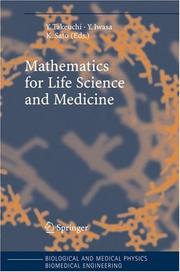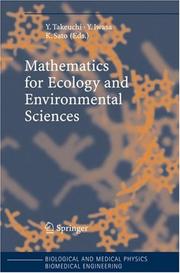| Listing 1 - 10 of 17 | << page >> |
Sort by
|
Book
Year: 1966 Publisher: Oxford s.n.
Abstract | Keywords | Export | Availability | Bookmark
 Loading...
Loading...Choose an application
- Reference Manager
- EndNote
- RefWorks (Direct export to RefWorks)
Book
Year: 1971 Publisher: Tokyo : Society of mining geologists of Japan,
Abstract | Keywords | Export | Availability | Bookmark
 Loading...
Loading...Choose an application
- Reference Manager
- EndNote
- RefWorks (Direct export to RefWorks)
COMPTE RENDUS D'ACTIVITE --- GEOLOGIE APPLIQUEE --- CONGRES, COLLOQUES... --- COMPTE RENDUS D'ACTIVITE --- GEOLOGIE APPLIQUEE --- CONGRES, COLLOQUES...
Book
Year: 1971 Publisher: Tokyo : Society of mining geologists of Japan,
Abstract | Keywords | Export | Availability | Bookmark
 Loading...
Loading...Choose an application
- Reference Manager
- EndNote
- RefWorks (Direct export to RefWorks)
COMPTE RENDUS D'ACTIVITE --- GEOLOGIE APPLIQUEE --- COMPTE RENDUS D'ACTIVITE --- GEOLOGIE APPLIQUEE
Book
Abstract | Keywords | Export | Availability | Bookmark
 Loading...
Loading...Choose an application
- Reference Manager
- EndNote
- RefWorks (Direct export to RefWorks)
Book
Year: 1971 Publisher: Tokyo Mineralogical society of Japan
Abstract | Keywords | Export | Availability | Bookmark
 Loading...
Loading...Choose an application
- Reference Manager
- EndNote
- RefWorks (Direct export to RefWorks)
Book
Year: 1970 Publisher: Tokyo : The mineralogical society of Japan,
Abstract | Keywords | Export | Availability | Bookmark
 Loading...
Loading...Choose an application
- Reference Manager
- EndNote
- RefWorks (Direct export to RefWorks)

ISSN: 16187210 ISBN: 1280744189 9786610744183 3540344268 354034425X Year: 2007 Publisher: Berlin : Springer,
Abstract | Keywords | Export | Availability | Bookmark
 Loading...
Loading...Choose an application
- Reference Manager
- EndNote
- RefWorks (Direct export to RefWorks)
Dynamical systems theory in mathematical biology has attracted much attention from many scientific directions. The purpose of this volume is to present and discuss the many rich properties of the dynamical systems that appear in life science and medicine. The main topics include cancer treatment, dynamics of paroxysmal tachycardia, vector disease models, epidemic diseases and metapopulations, immune systems, pathogen competition and coexistence and the evolution of virulence and the rapid evolution of viruses within a host. Each chapter will serve to introduce students and scholars to the state-of-the-art in an exciting area, to present new results, and to inspire future contributions to mathematical modeling in life science and medicine.
Biomathematics. --- Population biology --- Medicine --- Mathematics. --- Medical mathematics --- Biology --- Mathematics --- Immunology. --- Virology. --- Biophysics. --- Biological physics. --- Statistical physics. --- Dynamical systems. --- Mathematical and Computational Biology. --- Physiological, Cellular and Medical Topics. --- Statistical Physics, Dynamical Systems and Complexity. --- Biophysics and Biological Physics. --- Dynamical systems --- Kinetics --- Mechanics, Analytic --- Force and energy --- Mechanics --- Physics --- Statics --- Mathematical statistics --- Biological physics --- Medical sciences --- Microbiology --- Immunobiology --- Life sciences --- Serology --- Math --- Science --- Statistical methods --- Ecology --- Health Workforce

ISBN: 1280744197 9786610744190 3540344284 3540344276 3642070787 Year: 2007 Publisher: Berlin ; New York : Springer,
Abstract | Keywords | Export | Availability | Bookmark
 Loading...
Loading...Choose an application
- Reference Manager
- EndNote
- RefWorks (Direct export to RefWorks)
Dynamical systems theory in mathematical biology has attracted much attention from many scientific directions. The purpose of this volume is to discuss the many rich and interesting properties of dynamical systems that appear in ecology and environmental sciences. The main topics include population dynamics with dispersal, nonlinear discrete population dynamics, structured population models, mathematical models in evolutionary ecology, stochastic spatial models in ecology, game dynamics and the chemostat model. Each chapter will serve to introduce students and scholars to the state-of-the-art in an exciting area, to present important new results, and to inspire future contributions to mathematical modeling in ecology and environmental sciences.
Ecology --- Environmental sciences --- Mathematics. --- Ecology. --- Community ecology, Biotic. --- Applied mathematics. --- Engineering mathematics. --- Biomathematics. --- Statistical physics. --- Dynamical systems. --- Mathematical and Computational Biology. --- Applications of Mathematics. --- Community & Population Ecology. --- Genetics and Population Dynamics. --- Statistical Physics, Dynamical Systems and Complexity. --- Dynamical systems --- Kinetics --- Mathematics --- Mechanics, Analytic --- Force and energy --- Mechanics --- Physics --- Statics --- Mathematical statistics --- Biology --- Engineering --- Engineering analysis --- Mathematical analysis --- Biocenoses --- Biocoenoses --- Biogeoecology --- Biological communities --- Biomes --- Biotic community ecology --- Communities, Biotic --- Community ecology, Biotic --- Ecological communities --- Ecosystems --- Natural communities --- Population biology --- Balance of nature --- Bionomics --- Ecological processes --- Ecological science --- Ecological sciences --- Environment --- Environmental biology --- Oecology --- Math --- Science --- Statistical methods --- Environmental science --- Genetics --- Complex Systems. --- Embryology --- Mendel's law --- Adaptation (Biology) --- Breeding --- Chromosomes --- Heredity --- Mutation (Biology) --- Variation (Biology) --- Ecology .
Article
Abstract | Keywords | Export | Availability | Bookmark
 Loading...
Loading...Choose an application
- Reference Manager
- EndNote
- RefWorks (Direct export to RefWorks)
Early environmental stimuli have been shown to affect many aspects of physiological and behavioral development in humans and other mammals. In this study, we investigated the effects of early weaning on behavioral traits in adulthood. Mate and female Balb/c mice were divided into two groups, one weaned from the dam at 14 days of age (early-weaned group) and the other weaned at 21 days of age (normally weaned group), as a control. At 8 and 22 weeks of age, animals of both groups were subjected to the plus maze test to assess their anxiety levels. The early-weaned mice showed lower frequency of entry into the open arms of the maze. Although a subsequent isolation-induced aggression test revealed no clear differences between the two groups, when males from each of the two weaning groups were regrouped after 1 month of isolation, the early-weaned animals showed a great number of wounds on their tails and hindquarters. These results suggest that the deprivation of mother-pup interaction from 14 through 21 postnatal days augments anxiety and aggressiveness. (C) 2004 Elsevier Inc. All rights reserved
Adult. --- Adulthood. --- Age. --- Aggression. --- Aggressiveness. --- Animal. --- Animals. --- Anxiety and aggression. --- Anxiety. --- Behavioral development. --- Behavioral-development. --- Control. --- Deprivation. --- Development. --- Dual-chambered cages. --- Early separation. --- Early weaning. --- Elevated plus-maze. --- Environmental stimuli. --- Ethopharmacological analysis. --- Female. --- Frequency. --- Gene-expression. --- Group. --- Human. --- Humans. --- Individual-differences. --- Interaction. --- Isolation. --- Level. --- Male. --- Males. --- Mammals. --- Maternal-care. --- Mice. --- Physiological. --- Preweanling rat. --- Social-factors. --- Stimuli. --- Stress reactivity. --- Test. --- Time. --- Weaning.
Book
Abstract | Keywords | Export | Availability | Bookmark
 Loading...
Loading...Choose an application
- Reference Manager
- EndNote
- RefWorks (Direct export to RefWorks)
| Listing 1 - 10 of 17 | << page >> |
Sort by
|

 Search
Search Feedback
Feedback About UniCat
About UniCat  Help
Help News
News